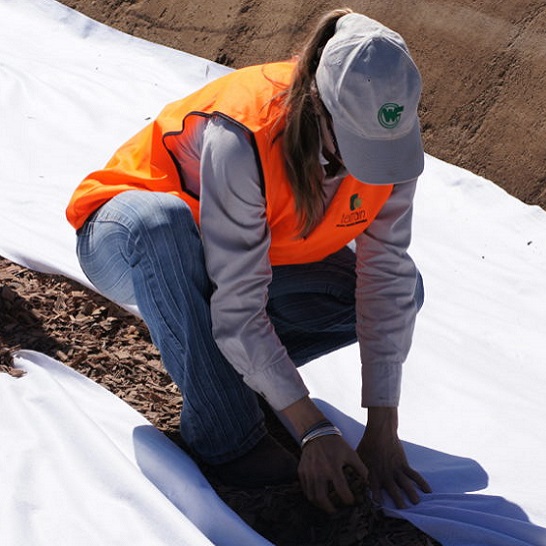NEW BIOREACTORS INSTALLED
MIP PROJECT INSTALLS 6 NEW BIOREACTORS
FARMERS HELP TRIAL NEW SYSTEMS
With the help of local landholders, six new denitrification bioreactors are being installed on Wet Tropics farms, in an effort to improve water quality.
Cane and banana farmers are continuing a trend in innovation when it comes to reducing the amount of nitrogen, sediment and pesticides flowing to the Great Barrier Reef, as part of the Wet Tropics Major Integrated Project (MIP).
Farmers involved in the community designed project are trialling the effectiveness of different water quality solutions, most of which are proof-of-concept in the region.
Tully and Johnstone landholders came together to finalise bioreactor designs and construction logistics prior to installation in August.
Bioreactors are woodchip-filled trenches used to remove nitrogen from groundwater before it enters local waterways. To minimise land being taken out of production they can be installed in the bottom of a current drain, or by attaching to ag-pipes, where they intercept water in a paddock before it enters a drain.
Suzette Argent from the MIP said landholders have been integral to the design process.
“We’re lucky to be working with bioreactor experts, but local knowledge is just as critical as technical expertise. You can’t beat the specialist knowledge that farmers have about the landscape, which informs the design process.”
“Ongoing landholder involvement deserves recognition, and we owe last year’s successful installation of a bioreactor, a high efficiency sediment basin and an in-drain wetland to this.”
“It’s an exciting time because everything we learn here can inform future projects, and potentially be applied in other reef catchments.”

Suzette Argent places geotextile over woodchips during bioreactor installation
Project staff and landholders monitored treated water from previously installed treatment systems throughout the 2018-19 wet season. It is now being analysed for baseline data as dry season sampling continues.
As well as the six bioreactors, a second high efficiency sediment basin will be installed. Two wetlands will also be ‘embellished’, which involves enlarging the treatment area of existing sites or improving their hydrology, so that the wetland can process more water.
Professor Steve Turton acknowledged the MIP’s achievements at last week’s Wet Tropics Report Card launch. The Report Card assesses the health of nine river basins from Daintree to the Herbert.
Professor Turton highlighted the collaborative efforts in the MIP. “Genuine partnerships are strengthening the links between science and on-ground practice.”
DENITRIFICATION BIOREACTORS ARE BEING TRIALLED IN THE WET TROPICS TO TEST THEIR EFFECTIVENESS AT REDUCING THE RUNOFF OF DIN INTO WATERWAYS
LATEST MIP STORIES
Constructed wetlands
 Monica Haynes
Monica Haynes
 December 2, 2021
December 2, 2021
Water quality monitoring funding
 Skye
Skye
 September 29, 2021
September 29, 2021
Landscape wetland trial on Tully Sugar Ltd cane farm
 Skye
Skye
 June 21, 2021
June 21, 2021






























